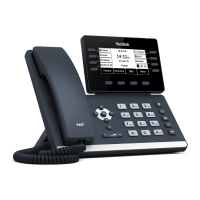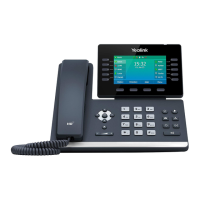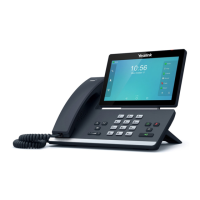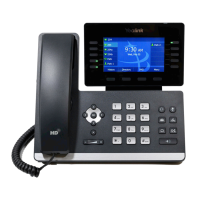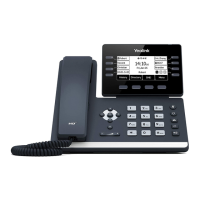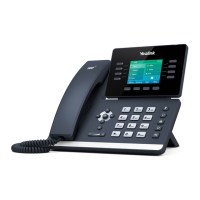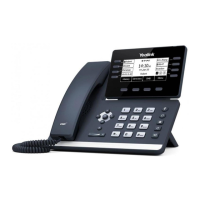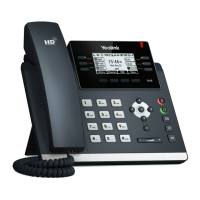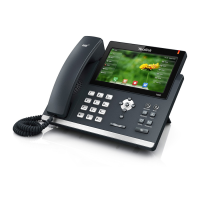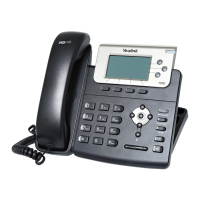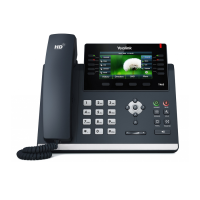User Guide for T5 Series IP Phones
90
"([1-9])([2-7])3" would match "923", "153", "773", etc.
The “$” should be followed by the sequence number of a parenthesis. The “$”
plus the sequence number means the whole character or characters placed in
the parenthesis. The number directs to the right parenthesis when there are
more than one. Example:
A replace rule configuration, Prefix: "001(xxx)45(xx)", Replace: "9001$145$2".
When you dial out "0012354599" on your phone, the IP phone will replace the
number with "90012354599". “$1” means 3 digits in the first parenthesis, that
is, “235”. “$2” means 2 digits in the second parenthesis, that is, “99”.
Note
Configuring the Replace Rule
Configuring a replace rule can speed up the pace of dialing out a long number. You can
configure up to 100 replace rules, a pattern(s) with wildcards (refer to the expression syntax in
the table above), so that any string that matches the pattern(s) will be replaced. For example, a
replace rule is configured as “prefix: 1” and “replace: 1234”, when you try to dial out the number
“1234”, you just need to enter “1” on the phone and then press the Send soft key.
Adding a Replace Rule
Procedure:
1. Click Settings->Dial Plan->Replace Rule.
2. Enter the string (for example, 1) in the Prefix field.
3. Enter the string (for example, 1234) in the Replace field.
4. Enter the desired line ID in the Account field or leave it blank.
The IP phone supports a new dial plan mechanism – digit map. Digit maps are defined by a single
string or a list of strings. If a number you dial matches any string of a digit map, the call is
automatically placed.
Note that if digit map feature is enabled, the old dial plan rules (described in this chapter) will be
ignored. For more information, contact your system administrator.
